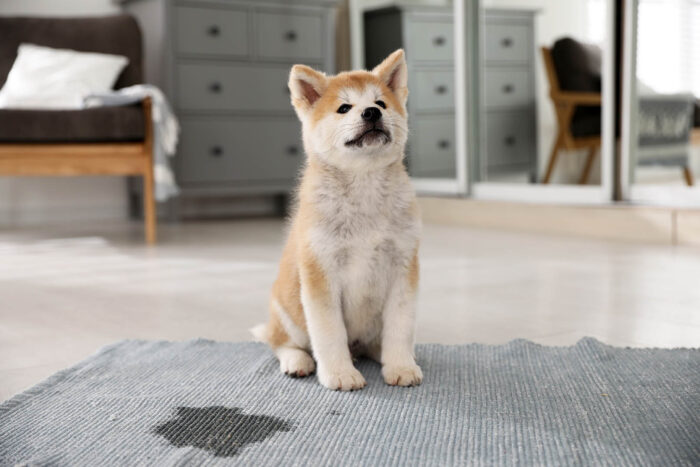As any exasperated dog owner scrubbing up yet another puddle or racing home half-asleep to relieve desperate whining knows firsthand, judging canine bladder limits proves tricky business. While some pups seem capable of eternallydelayed gratification, others struggle lasting even a few hours sans potty break. So what truly determines dogs’ urinary endurance? The reality involves understanding key physiological factors, individual variation, risk thresholds, and responsible oversight limiting unavoidable accidents. In this post we talk about How Long Can Dogs Really Hold Their Pee.
Average Healthy Urinary Range
Most veterinarians estimate the general window for adult dogs voluntarily holding urine stretches around 8-10 hours on average without creating discomfort or long term issues. However, several pivotal elements adjust this timeframe in either direction. Younger and smaller dogs unsurprisingly tend toward shorter duration capacities, while larger breeds reach exceptional extremes nearing 24 hours in isolated incidents! Generally speaking, though, no dog should ever face that long length between opportunities, regardless their physical ability. It constitutes straight-up neglect.
Key Influencing Factors
When estimating your own dog’s ideal urine holding capacity, consider these major elements:
● Age – Senior and juvenile pups lack muscle strength and bladder control.
● Size – Smaller bladders limit storage room naturally.
● Fluids – Chugging waterlogged dogs fill quicker!
● Health Issues – Infections, stones, anatomical quirks affect function.
● Environmental Stress – Change strains bodily equilibrium.
● Training – Conditioning extends latency reflexes.
● Pregnancy/Heat– Hormones prompt more frequent urination.
● Medications – Some drugs directly irritate bladder walls.
● Physical Activity – Movement jostles internal contents.
For example, a newly adopted rescue unfamiliar with outdoors access would understandably struggle holding urine adequately indoors overnight if never previously conditioned to do so. Alternatively, a frequent traveler well-versed in long car rides adapts accordingly as needed. Tracking your dog’s baselines during stable periods allows realistic expectations adjusting for situational variations mentioned above too.
Max Holding Duration
Regardless unique traits, no dog should stay crated or contained all day sans bathroom chances and remain healthy long term. Limiting water and food obviously reduces output somewhat, but also risks dehydration and metabolic issues. Moreover bladder stretching weakens muscle tone over time, promoting incontinence and infections. Organs don’t evolve designed for perpetual holding.
Likewise, emotional anxiety over forced holding generates harmful stress hormones and eliminates the training benefits of positive-reinforcement housebreaking techniques. Ideally adults require mid-day relief opportunities even if just quick backyard visits. At bare minimum, morning and post-work sessions allow adequate emptying for bladder health. Pushing physical boundaries too frequently inevitably backfires. Know your pet’s limits and respect signs like pacing or whimpering communicating urgency.
Warning Signs
So when has your dog’s holding duration definitely maxed out? Pay attention for these warning indicators:
● Whining/Barking/Pawing – Classic “I gotta go!” behaviors
● Pacing/Circle Routines- Anxiety translating to physical outlets
● Hunched Posture – Signifies abdominal/urinary tract discomfort
● Squatting Frequently – Overflow dribbles spur instinctive stances
● New Accidents – Even well-trained dogs have limits
If you witness these behaviors after lengthy crating/waiting spans, immediately tend to your dog’s relieving needs first before scolding accidental lapses. Only a truly defiant, healthy pup deserves correction regarding house soilings. Instead focus on preventing reoccurrences through proper planning and supervision moving forward. Reward success rather than reacting punitively to biological failings out of your dog’s control in that moment.
The Take Away
At the end of the day, maintaining perspective regarding your dog’s physical make up and current circumstances allows cuttingsome slack regarding pent up bathroom requirements. Having an idea what timeframes typically pass comfortably gives helpful context gauging when to initiate potty breaks proactively too. Pay attention to age, size, intake influences, health issues and other dynamics that impact urgency levels day today as well. While rare dogs might resist relief valiantly for prolonged periods when necessity strikes, responsible pet parents never test those risky limits without good reason. Allow reasonable washroom access as often as possible for bladder wellbeing and peaceful cohabitating! Just ensure proper training and rewards reinforce the intended outdoor elimination destinations from puppyhood forward. I hope this How Long Can Dogs Really Hold Their Pee post helps you.

Dr. Katie Lawlor is a seasoned expert in pet care with over 8 years of experience dedicated to enhancing the well-being of pets and their families. As a passionate advocate for animal health, Dr. Lawlor combines her extensive knowledge with a compassionate approach, offering valuable insights and practical advice on pet wellness. Her commitment to improving the lives of pets and their owners is reflected in her engaging content on PetPawsitively .com. Follow Dr. Lawlor’s work and connect with her on Instagram for expert tips and support.

